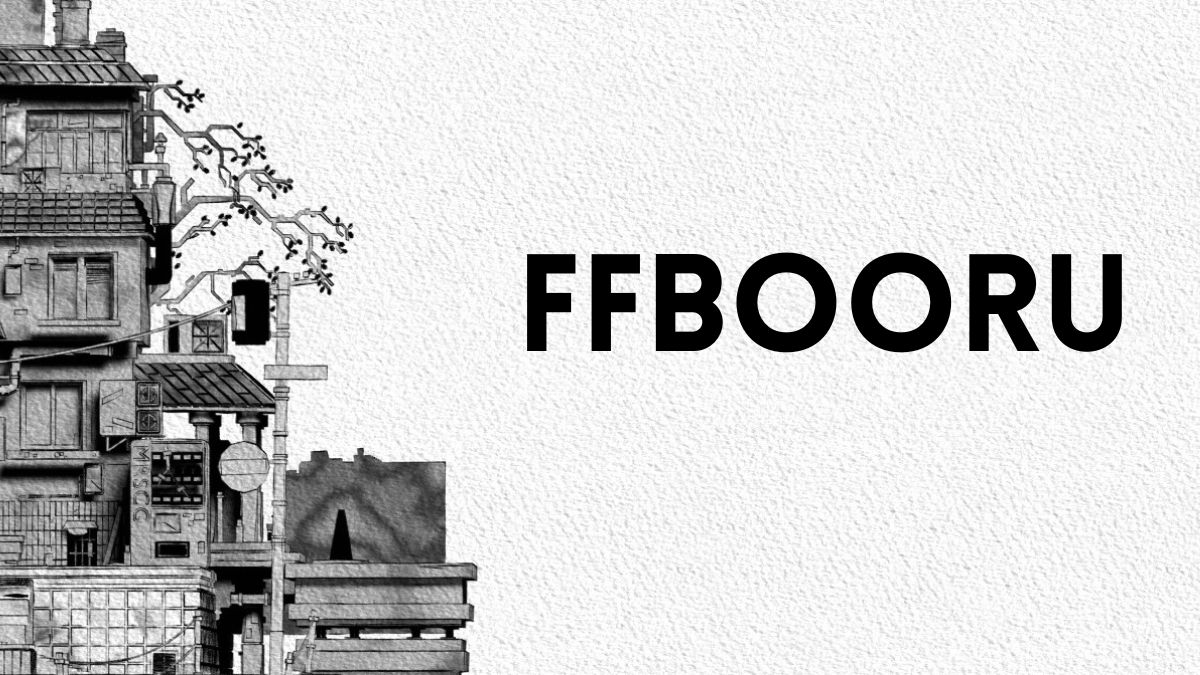TOPIC
Mastering the Keeper Standards Test: Tips and Tricks for Success

Are you ready to tackle the Keeper Standards Test? Whether you’re aiming for certification or simply looking to enhance your knowledge, mastering this test can open doors to new opportunities. It’s not just about passing; it’s about understanding what it takes to succeed and excel in your field. With the right strategies and preparation, you can navigate through the complexities of this exam with confidence.
In this guide, we’ll explore essential tips and tricks that will help you conquer each section of the test. From effective study techniques to insider advice on avoiding common pitfalls, we’ve got everything you need at your fingertips. Let’s dive into how you can make your Keeper Standards Test experience a triumphant one!
Understanding the Keeper Standards Test
The Keeper Standards Test is designed to evaluate your knowledge and skills essential for effective performance in the field. It covers a range of topics that reflect real-world scenarios you may encounter.
Understanding its structure is crucial. The test typically includes multiple-choice questions, along with an essay portion where deeper insights are required. This combination assesses both your ability to recall information and apply it thoughtfully.
Each section targets specific competencies. From theoretical concepts to practical applications, every question aims to gauge how well you grasp the fundamental principles of being a successful keeper.
Familiarizing yourself with the types of questions asked can give you a significant edge. Knowing what’s expected helps alleviate anxiety and enhances your focus during preparation. Embracing this understanding will set the tone for your study process moving forward.
Importance of Passing the Test
Passing the Keeper Standards Test is crucial for anyone serious about advancing in their field. This assessment not only validates your skills but also enhances your professional reputation.
Employers often view a passing score as an indicator of competence and commitment. It shows that you have met industry benchmarks and are prepared to tackle real-world challenges.
Moreover, success on this test can open doors to new opportunities. Many organizations require it as part of their hiring process or internal promotions.
For those looking to specialize further, achieving a high score may grant access to advanced training programs or certifications, setting you apart from competitors.
Mastering the Keeper Standards Test lays the groundwork for long-term career growth. It’s more than just a test; it’s a stepping stone toward achieving your professional goals.
Preparation Strategies for the Test
Preparing for the Keeper Standards Test requires a strategic approach. Start by familiarizing yourself with the test format and content. Knowing what to expect can reduce anxiety and boost confidence.
Create a study schedule that allows ample time for each topic. Breaking down your materials into manageable sections makes it easier to digest complex information.
Utilize flashcards for key terms and concepts, which can aid retention. Visual aids like charts or diagrams also help illustrate complicated ideas and enhance memory recall.
Practice tests are invaluable tools. They not only highlight areas needing improvement but also acclimate you to timed conditions similar to the actual exam scenario.
Engage in group studies if possible. Discussing topics with peers can offer new perspectives and reinforce learning through teaching others.
Tips for Multiple Choice Section
When tackling the multiple choice section of the Keeper Standards Test, approach each question with a strategic mindset. Start by reading all options carefully before selecting an answer. Sometimes, answers may seem right at first glance but can be misleading.
Eliminate any choices you know are incorrect. This process narrows your options and increases your chances of selecting the correct answer. Look for keywords in questions that hint at specific details required.
Pay attention to qualifiers like “always” or “never.” These words often indicate extreme statements, which might not be accurate.
Manage your time wisely during this section. If you’re unsure about a question, mark it and move on to others instead of getting stuck. Returning later allows you to focus better without pressure.
Trust your instincts! Often, your first choice is the best one unless you’re confident about another option after further consideration.
Techniques for Essay Portion
Approaching the essay portion of the keeper standards test can feel daunting. However, with the right techniques, you can navigate this segment confidently.
Start by reading the prompt carefully. Take a moment to understand what is being asked before formulating your response. This ensures you address all parts of the question.
Create an outline before writing. Jot down key points and examples that support your argument. Organizing your thoughts will lead to a more coherent essay.
Use clear and concise language throughout your writing. Avoid convoluted sentences that may confuse readers. Aim for clarity in every paragraph.
Don’t forget to leave time for revision at the end. A quick read-through allows you to catch any mistakes or awkward phrasing, enhancing overall quality.
Practice makes perfect; routinely write essays on various topics under timed conditions to build confidence and improve speed.
Common Mistakes to Avoid
When preparing for the keeper standards test, many candidates fall into common traps that can hinder their performance. One frequent mistake is underestimating the importance of understanding the test format. Not familiarizing yourself with how questions are structured could lead to confusion on exam day.
Another pitfall is neglecting time management during preparation and on the test itself. Rushing through sections or spending too long on difficult questions can throw off your entire strategy.
Additionally, some candidates focus solely on memorization instead of comprehension. Understanding concepts deeply will serve you better than rote learning facts without context.
Avoid overlooking practice tests. These simulations provide valuable insights into pacing and question types, helping you feel more confident come test day.
Resources and Study Materials
Finding the right resources is crucial for acing the keeper standards test. A variety of study materials can help you grasp key concepts effectively.
Start with official guidelines and sample questions provided by testing authorities. These materials give you an insight into what to expect on test day.
Consider investing in review books specifically designed for the keeper standards test. They often include practice exams, detailed explanations, and tips from experts who have successfully navigated the exam process.
Online courses are another great option. Many platforms offer targeted lessons that break down difficult topics into manageable sections.
Don’t overlook community forums or social media groups dedicated to this subject. Engaging with others preparing for the same challenge can provide motivation and fresh perspectives on tricky topics, making your study sessions more dynamic and effective.
Test Day Tips and Tricks
On test day, your mindset matters. Start with a good breakfast to fuel your brain. Choose something light yet energizing.
Arrive early at the test center. This allows you to settle in and avoid any last-minute panic. Familiarize yourself with the surroundings—find restrooms and emergency exits.
Bring all necessary materials: ID, pens, or pencils as required. Ensure you have everything organized beforehand to minimize stress.
Stay calm during the exam by taking deep breaths if anxiety creeps in. Focus on one question at a time; don’t rush through them all at once.
If you’re stuck on a question, move on and return later if time permits. Trust your instincts; often your first guess is correct.
Hydration can also play a crucial role, so sip water before entering but be cautious about overdoing it right before the test starts.
Success Stories from Those Who’ve Passed
Success stories can be incredibly motivating. Hearing from those who have successfully passed the Keeper Standards Test often provides a sense of hope and encouragement.
Take Sarah, for example. She struggled initially but found a study group that kept her accountable. Their shared insights made all the difference in her understanding of challenging concepts.
Then there’s James, who relied heavily on practice tests. By simulating real exam conditions, he built his confidence over time and learned how to manage his pacing during the actual test.
Another inspiring tale comes from Maria, who discovered effective memory techniques that helped her retain information better. These strategies transformed her studying habits and ultimately led to success.
These individuals remind us that with dedication and perseverance, passing the Keeper Standards Test is entirely achievable. Their journeys illustrate diverse paths to success, reinforcing that everyone has their unique approach in overcoming obstacles along the way.
Conclusion
Mastering the Keeper Standards Test is no small feat, but with the right approach and mindset, success is within reach. Understanding what to expect from the test will help you navigate its challenges more effectively. The importance of passing this test cannot be overstated, as it plays a crucial role in your career development.
Preparation strategies are essential to building your confidence and knowledge base. Tackle both the multiple choice and essay sections with targeted techniques that enhance your performance. Avoid common pitfalls by being aware of mistakes many candidates make.
Utilize available resources and study materials to ensure you’re well-equipped on test day. Remember that effective time management can significantly impact how you perform during the exam.
Success stories from individuals who have passed serve as motivation; their experiences highlight that determination combined with strategic preparation leads to achievement.
With commitment and these tips at hand, you’re setting yourself up for a rewarding experience in mastering the Keeper Standards Test.
TOPIC
Behind the Pixel Curtain: The Rise and Raw Realities of FFBooru

In the pixel-pulsing, fantasy-fueled alleyways of the internet, there exists a hidden archive that thrives at the crossroads of fandom, eroticism, and digital expression: ffbooru. For the uninitiated, it may sound like the name of a forgotten Pokémon or a cryptic password from a bygone MMORPG. But in reality, ffbooru is part of a larger, hyper-niche ecosystem — a digital art booru that collects, curates, and occasionally courts controversy over its finely categorized database of fetish-centric artwork, primarily in the realm of transformation, inflation, furry, and gender-bending content.
What follows is a deep dive — think: submarine-level — into the surprisingly intricate world of ffbooru. We’ll explore where it came from, who uses it, why it matters in the digital age, and what it tells us about online subcultures in 2025.
Welcome to the Booru-verse
Let’s set the stage with some context. The word “booru” originates from Danbooru, the original imageboard software that revolutionized how anime and manga images were tagged, uploaded, and shared online. A “booru” is essentially a searchable, tag-based image database where content is often contributed by users. Over time, variations spawned across the internet: Gelbooru, Rule34booru, Derpibooru, e621, and more — each one catering to increasingly specific genres and tastes.
Enter ffbooru — a niche, user-driven booru focused heavily on transformation and fetish content, typically involving fantastical shifts in size, shape, gender, and species. A fusion of fandom art, speculative body horror, and adult fantasy, ffbooru isn’t just a dumping ground for wild imaginations. It’s a curated space — whether curated by art enthusiasts or compulsively organized fetishists is up for debate.
But one thing’s for sure: it has an audience, and a surprisingly loyal one at that.
What Exactly Is FFBooru?
At its core, ffbooru is an image repository. But calling it that feels like calling Tokyo just “a city” — technically true, but existentially inadequate.
The platform is built with a familiar booru structure: a clean (if a bit retro) interface, exhaustive tagging system, and user moderation. Users upload artwork — often AI-assisted, sometimes hand-drawn, occasionally photomanipulated — and tag it with fetish-specific categories: “inflation,” “expansion,” “furry,” “TG” (gender transformation), “BBW,” “belly,” “futa,” and more.
If this makes your eyebrows rise or your heart flutter — mission accomplished. ffbooru trades in the provocative and the peculiar. But it’s also highly methodical. Tags aren’t slapped on randomly; they’re curated to offer precision. Want a female-to-male dragon transformation with pregnancy expansion and mind control? There’s a tag string for that.
It’s this combination of hyper-specificity and expressive freedom that draws people in. For some, it’s a haven. For others, it’s an artistic rebellion. For the rest, it’s a rabbit hole of the most unpredictable kind.
The Audience: Who Is Browsing FFBooru?
Unlike mainstream imageboards, ffbooru isn’t for the casually curious. Its user base is tight-knit, often anonymous, and deeply engaged in transformation subgenres.
Demographics are hard to pin down (few users are volunteering their LinkedIn), but browsing behavior suggests three dominant user types:
-
The Lurker-Curator
This person visits often, never posts, but has developed advanced tagging skills and a digital nose for “rare” uploads. They might never comment, but they know every artist’s archive like the back of their hand. -
The Artist-Alchemist
Often blending AI and traditional art, these users contribute new pieces regularly. They’re experimenting — both with media and identity. For many, ffbooru is a sketchpad for fantasies they can’t post on Instagram. -
The Commentator-Fanatic
Passionate, verbose, and always ready to debate the ethics of blob TF versus weight gain TF. They keep the conversation alive, maintain the community vibe, and often cross-post links to related Discord servers or Pixiv galleries.
This is not a space for “average” internet browsing. It’s a bespoke atelier for the fetishistically inclined — a museum for the misunderstood, if you will.
Fetish Meets Fandom: The Artistic Side of FFBooru
While it’s tempting to write off ffbooru as pure smut — the DeviantArt of Deviance — there’s real artistry at play here. Much of the content requires complex digital rendering, character design, narrative context, and yes, a working knowledge of anatomy (even if it’s being flagrantly distorted).
In many cases, the images are serial — telling a story through frames or captions. These mini-narratives often revolve around transformation arcs: a character eats a mysterious fruit and inflates like a balloon, or is cursed into turning into a centaur, or morphs into a rubbery caricature of their former self. It’s surreal. It’s fantastical. It’s unapologetically niche.
And perhaps more importantly — it’s one of the only places online where these kinds of stories aren’t met with derision or censorship.
The Unspoken Rule: No Judgment, Just Tags
If Reddit is the town hall of the internet and Twitter is its late-night dive bar, ffbooru is its after-hours speakeasy where the taboo becomes tradition.
There is a tacit understanding among the community: “You don’t kink-shame me, I don’t kink-shame you.” This radical openness is what keeps ffbooru from turning into a digital battleground of taste policing. Everyone’s too busy uploading the next bizarre masterpiece.
That said, moderation does exist. Duplicate uploads get removed. Mis-tagged content is flagged. And there’s a clear divide between fantasy and real-world legality — anything violating hard boundaries like underage depictions or non-consensual real-life imagery is removed promptly.
So while it may seem like an unfiltered deluge of pixelated kink, ffbooru runs with a kind of internal logic and communal respect that gives it structure.
The Ethics of Fetish Archiving
This brings us to a nuanced question: Is ffbooru ethical?
The answer isn’t binary. It lives in the grey zone — a swirling whirlpool of consent, imagination, performance, and sometimes controversy. Critics argue that boorus like ffbooru normalize fetishes that, in the wrong context, can spiral into unhealthy obsessions or blur the lines between fiction and reality.
Supporters counter with an equally valid stance: outlets like ffbooru offer a safe, anonymous space to explore complex fantasies that might otherwise be buried under shame. In a world where sexual repression and marginalization often go hand-in-hand, boorus serve as a pressure valve.
The debate continues. But like many things in modern sexuality, the conversation is evolving.
AI’s Role in the FFBooru Renaissance
In recent years, AI-generated content has exploded across booru-style sites. ffbooru is no exception. Tools like Stable Diffusion, NovelAI, and various NSFW-adapted AI models have supercharged the ability for users to churn out high-quality, fetish-specific content in minutes.
The result? An image tsunami. While this democratizes creation, it also raises questions about artistic value, originality, and copyright. Some argue AI art dilutes the skill pool; others see it as empowering — especially for users without traditional drawing backgrounds.
In ffbooru, where narrative and fantasy often trump technical perfection, AI-generated work is increasingly welcome. In fact, many users now pair AI with digital touch-ups or write accompanying stories to elevate the material beyond prompt-spam.
We’re seeing a fusion of storytelling, kink, and technology that feels distinctly 2025.
Digital Footprints: Privacy and the Underground Nature of FFBooru
Despite its open platform, ffbooru maintains a low profile. There are no banner ads, no aggressive SEO, no TikTok dances driving traffic. It thrives in relative obscurity — part by design, part by necessity.
The anonymity of both creators and viewers is a critical component of the platform’s longevity. Users trust that their curiosities won’t be exploited, monetized, or exposed. That sense of safety is what keeps them coming back.
But as data privacy concerns intensify across the internet, it’s worth asking: how long can platforms like ffbooru fly under the radar?
For now, its underground appeal is its protection. But its ever-growing content library is also making it harder to ignore.
Final Verdict: Why FFBooru Matters More Than You Think
ffbooru may not make it into art school curriculums or Wired magazine covers. But it’s a case study in something far more important: how digital spaces empower the expression of taboo, identity, and imagination.
It shows us what happens when the internet becomes a true sandbox — where fantasy isn’t just tolerated, but archived, tagged, and treasured.
It reminds us that art can be provocative, bizarre, unfiltered, and still meaningful. And it proves that even in 2025, the most fascinating corners of the web are often the ones we stumble into, not the ones shoved in our feed.
So next time you hear someone mention ffbooru, don’t laugh. Click. Explore. Try to understand. Behind every inflation tag and transformation arc lies a digital artist trying to make sense of their desires — or simply trying to make someone else smile, blush, or double-take.
In an internet increasingly obsessed with conformity, ffbooru is the weird, wonderful, and wildly specific breath of fresh air we didn’t know we needed.
TOPIC
Effective Link-Building Strategies for Today’s Digital Landscape

Introduction
In digital marketing, the significance of link-building as a pivotal SEO strategy cannot be overstated. By acquiring hyperlinks from external websites to your own, link-building boosts your site’s authority and improves its visibility in search engine results. Effective link-building creates a network of high-quality, contextually relevant links that foster credibility and authority. As digital environments evolve, marketers are tasked with adopting more sophisticated strategies that align with ethical standards and search engine algorithms.
The importance of a robust link-building strategy continues to grow as search engines develop ever more sophisticated methods for determining which sites should rank at the top of search results. By embracing ethical practices and focusing on content quality, businesses can cultivate a sustainable digital presence and effectively navigate the competitive online landscape.
Importance of Quality Over Quantity
Historically, the effectiveness of link-building was often measured by the sheer number of backlinks a website could accumulate. However, as search engine algorithms have evolved, the focus has shifted significantly toward learn about link building strategies prioritizing quality over quantity. In today’s digital landscape, obtaining a high volume of irrelevant or low-quality links can harm a website’s reputation and rankings.
Search engines now prioritize the relevance and authority of linked content, meaning link-building efforts should center around acquiring links from reputable websites that align with the target site’s content theme. This deliberate focus on quality enhances search rankings and helps cultivate genuine connections within a given niche or industry.
Quality links act as endorsements of a site’s value and reliability. By associating your site with credible sources, you increase its authority, signaling to search engines that your content is trustworthy and beneficial to users. This, in turn, contributes to better organic search performance and broader digital visibility, which are crucial for long-term success.
Ethical Link-Building Techniques
1. Guest Blogging: Guest blogging on well-respected platforms within your industry is an impactful way to acquire quality backlinks. By contributing insightful and original content to other sites, you gain exposure to new audiences and earn valuable backlinks that accentuate your expertise and authority.
2. Content Creation and Promotion: Developing shareable and engaging content is key to attracting organic backlinks. Visual content, such as infographics, videos, and interactive charts, can capture users’ attention and encourage them to link to your site. Promoting this content through social media and outreach campaigns can further amplify its reach.
3. Building Resource Pages: Establishing resource pages that offer valuable information and tools for your target audience is a great strategy. These pages can serve as go-to references for industry professionals, leading to natural backlinks from other sites that wish to share these resources with their audiences.
4. Networking and Relationship Building: Building relationships with industry influencers, bloggers, and thought leaders can result in mutual link exchanges. By fostering genuine connections within your industry, you create opportunities for collaboration and highlight your expertise through others’ endorsements.
Incorporating External Links Effectively
Incorporating relevant and credible external links within your content enhances its value and offers readers added context and depth. When thoughtfully embedded, external links serve as references and endorsements of the content’s reliability and authenticity. This approach aligns with best practices for content creation and helps build a robust network of reputable affiliations.
To seamlessly integrate external resources, consider linking to authoritative sources that expand on key points within your content. For example, referencing articles from trusted SEO publications or academic studies can reinforce your message and add weight to your arguments when discussing ethical link-building strategies. Including such resources demonstrates thorough research and provides your audience with avenues for further exploration.
Moreover, using external links strategically can enhance user engagement by directing them to supplementary content that augments their understanding of the topic. This creates a more informative and enriching experience, positioning your content as comprehensive and valuable.
Navigating Helpful Content Guidelines
Adhering to Helpful Content Guidelines is pivotal for ensuring that your content meets the evolving expectations of both search engines and users. These guidelines emphasize creating people-first content that provides genuine value, addresses users’ needs, and fosters meaningful engagement.
To create content that aligns with these principles, thoroughly research your target audience and understand their interests, preferences, and challenges. This information will guide the development of relevant, solution-focused content that resonates with readers and satisfies their informational needs. Engaging with audience feedback and refining your content strategy based on these insights will help maintain your content’s relevance and appeal.
Additionally, ensuring content accessibility and readability is essential for enhancing user experience. This includes optimizing site structure, using clear and concise language, and incorporating headings, subheadings, and bullet points where appropriate to break down complex information into manageable sections. Delivering content that is easy to digest and navigate will encourage users to engage more deeply with your material.
Conclusion
Effective link-building is a dynamic and integral component of a successful SEO strategy, central to enhancing online visibility and authority in today’s competitive digital landscape. Prioritizing quality over quantity, embracing ethical practices, and incorporating trusted external resources are key elements of a robust link-building strategy. By adhering to Helpful Content Guidelines and continuously refining your approach, you can cultivate a sustainable digital presence that consistently attracts and engages users.
Maintaining a commitment to quality, authenticity, and user-centric principles will set your link-building efforts apart as the digital environment evolves. By establishing genuine connections, delivering valuable content, and fostering an interactive community, you can strengthen your digital footprint and achieve enduring success in your online endeavors.
TOPIC
Mastering Dice Management in Monopoly Go: Essential Tips for Efficient Play

Introduction
Monopoly Go brings a fresh twist to the classic board game by integrating a digital dice-rolling mechanic that’s essential to your progress. Whether you’re advancing through properties, completing tasks, or competing in events, dice rolls are the core of your gameplay. However, as dice are limited, learning to manage them efficiently can significantly impact your success. In this article, we’ll explore the importance of controlling your dice usage, maximizing free dice sources, and employing smart strategies to ensure you have enough to keep playing and win the game.
Earning Dice
Hourly Free Dice
Monopoly Go offers free dice every hour, which accumulate until you reach the 200-dice cap. Once you hit this limit, the game stops replenishing your dice until they drop below 200. If you’re low on dice, it’s a good idea to wait for the hourly refresh to continue playing.
Quick Wins
Completing daily tasks known as Quick Wins rewards you with additional dice. These tasks are simple actions like moving around the board or improving your properties. By consistently completing these, you’ll steadily build up your dice stash.
In-Game Store Rewards
Every eight hours, the in-game store offers Monopoly Go Dice. Be sure to check in regularly and collect these rewards to maximize your dice supply without spending any money.
Tycoon Club Rewards
Joining the Tycoon Club gives you access to exclusive daily rewards, including free dice. If you’re a regular player, the Tycoon Club can be a valuable source of dice to keep you going.
BuyMMOG Purchases
If you’re looking for an instant dice boost, you can purchase additional dice through platforms like BuyMMOG. This option provides a quick way to keep playing without waiting for free dice to accumulate.
Making the Most of Sticker Albums
Collecting and Completing Sticker Albums
As you play Monopoly Go, you’ll earn sticker packs, and completing sticker albums rewards you with free dice. The rarer the stickers, the bigger the reward, making it a worthwhile goal to collect and complete these albums.
Trading Stickers with Friends
You can trade duplicate stickers with friends, which helps you complete albums faster. This adds a social element to the game, and working together can expedite your progress.
Completing Albums Multiple Times
Once you finish a sticker album, you can complete it again to earn even more dice. The more albums you finish, the more rewards you’ll accumulate, making it a great way to increase your dice supply over time.
Rolling Doubles in Jail for Extra Dice
Risky but Rewarding Strategy
Landing in Jail can feel like a setback, but it offers a unique opportunity to earn extra dice. If you roll doubles within three turns, you’ll not only get out of Jail but also receive bonus dice. While it’s a risky move, the potential reward can be significant, especially if you plan strategically.
Dice Roll Multiplier for Increased Payout
If you’ve activated a higher dice roll multiplier, landing doubles in Jail becomes even more lucrative. For example, rolling doubles with a multiplier of 100 could earn you thousands of extra dice. This strategy is especially useful if you’re close to a milestone or special event, as the increased dice payout can help you advance faster.
Partner Events: Teaming Up for Dice
Finding Active Players
Look for active players on your friends list or in the community who participate in events and exchange dice. They’re more likely to help you in team events.
Saving Dice and Reaching Milestones
Teaming up with active players lets you share event tasks, saving your dice and helping you reach milestones faster. Focus your dice elsewhere while your partner helps you progress.
Choosing the Right Dice Roll Multiplier
Adjusting Based on Upcoming Tiles
Check your board ahead of your roll. If there are high-reward spaces, use a higher multiplier. If it’s just standard tiles, a lower multiplier can save dice.
Maximize Rewards or Save Dice
Use a high multiplier when key event spaces are ahead to maximize your rewards. If you’re just moving around the board or on a regular property, save dice by using a lower multiplier.
Strategic Stopping: Know When to Take a Break
When to Pause During Events
Stop playing when you’re close to a milestone but unsure if you’ll make it in time. This prevents unnecessary dice expenditure.
Avoid Over-Spending in Tournaments
If you’re far from the next prize or it’s the end of an event, consider saving your dice for future opportunities instead of trying to push through.
Conclusion
By using these strategies, you can save dice and maximize their impact in Monopoly Go. Focus on earning free dice, completing Quick Wins and sticker albums, and partnering with active players. Remember to adjust your dice roll multiplier wisely and know when to take a break during events. Applying these tips will help you progress efficiently and make the most out of your gameplay!
-

 TOPIC12 months ago
TOPIC12 months agoTop 10 Gift Cards in Romania: A Complete Guide
-

 TECHNOLOGY1 year ago
TECHNOLOGY1 year agoLync Conf Mods You Should Install Today for Better Meetings
-

 TECHNOLOGY1 year ago
TECHNOLOGY1 year agoUnveiling Sifangds: The Future of Digital Innovation
-

 TOPIC12 months ago
TOPIC12 months agoPuppygirlxd: A Case Study in Modern Identity and Expression
-

 TECHNOLOGY12 months ago
TECHNOLOGY12 months agoWhy Plutoscreen. com/ is Revolutionizing Online Experiences
-

 TOPIC1 year ago
TOPIC1 year ago8 Energy-Efficient Basement Renovation Tips for a Sustainable Space
-

 TECHNOLOGY1 year ago
TECHNOLOGY1 year agoWhy SeveredBytes.net/ is Your Next Go-To Resource for Tech Insights
-

 TOPIC12 months ago
TOPIC12 months agoHow Eolaneday.iday is Shaping Modern Social Connections
